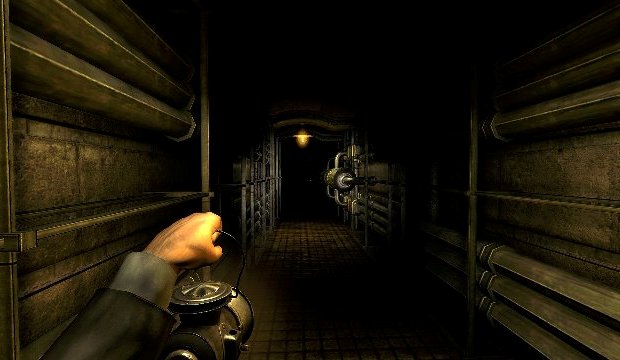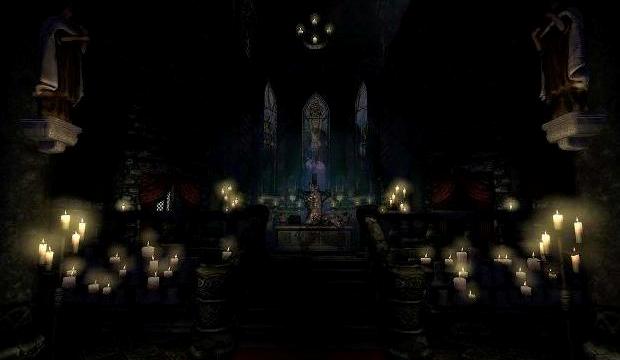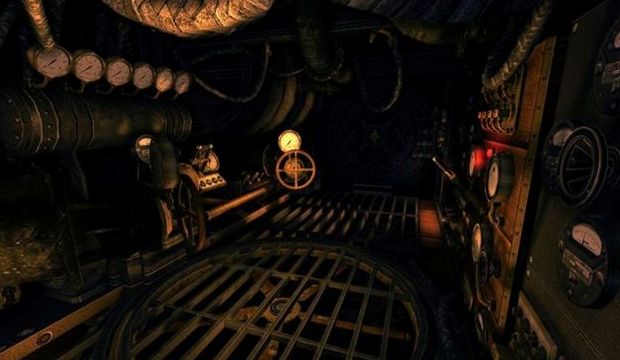Amnesia: A Machine for Pigs Review
Survival horror is seldom done right. Glancing into the recent past, it’s surprising how few horror games actually live up to the title. Hell, so many so-called “survival horrors” fail to even meet the basic premise of the genre itself, and seem to blindly ignore the “survival” part. With the old guard failing as their sequel numbers increase (Silent Hill, Resident Evil, Dead Space, to name a few), I feared the worst for Amnesia: A Machine for Pigs. Enthralled by the 2010 original, I knew that if they captured even half of that nightmarish atmosphere, it would make a worthy sequel. Thankfully, they did better than expected, and managed to create a game that can stand proudly alongside its elder sibling.
Set on New Years Eve 1899, in London, the player is introduced to the world through the tired, bleary eyes of wealthy industrialist Oswald Mandus as he wakes from a deep sleep in his empty chambers. It was here that he spent the last few months recovering from an illness contracted in Mexico, and during this time he was plagued by visions and feverish nightmares of a great machine. Now that he is finally recovered and coherent, he begins to search the empty mansion for his twin boys, who are all that remains of his family after his wife passed a year ago. The search takes him across the streets of London, into abandoned factories, an empty church and finally down below, into the heart of the infernal machine itself.

It’s hard to go into detail without spoiling the plot completely, and with a game such as this, the story is the key driving force. It is what compels you to keep going, keep playing so that you might uncover the truth behind all the foreshadowing and hidden clues. The plot is slowly revealed through several devices: Mandus’ journal takes notes and expands on events witnessed in the game, and scraps of a mysterious diary offer additional insight. Phonographs can be found in certain places, containing recordings of a conversation between Mandus and someone called “The Professor” while phone conversations with a vaguely familiar voice offer some guidance as to your immediate objective.
While the title of the game might reveal a seemingly large part of the plot, the real truth is hidden deeper in the game. Information is drip-fed in a non linear fashion, so that you’re kept guessing as to what the real truth is, right up to the end. And while the plot is solid, this disjointed presentation may cause the story to appear a bit nonsensical to some. A second playthrough would probably be more rewarding, as you’d pick up on some of the more subtle hints missed the first time around, but that really shouldn’t have to be the case.
A Machine for Pigs is very minimal from a gameplay perspective. There are no weapons to defend yourself with, no inventory to carry items. Instead you’re forced to either run, hide or die. You’re only tool is an electric lantern that is both a blessing and a curse, illuminating the way but also drawing the attention of the scores of monsters that lurk in the shadows. It’s true to genre and really makes you feel helpless. Every step forward requires courage and the game becomes increasingly adept at introducing new ways to unnerve you.

This sequel deviates quite a bit from its predecessor by taking the already minimal mechanics and stripping them back even further. Without the inventory screen, there are no tinderboxes to light candles to provide extra sources of safe, soothing light, and the electric lantern requires no sustenance, unlike its oil-based forefather. Tinderboxes are no great loss, but carefully managing your oil reserves in Dark Descent added another layer of tension that is noticeably absent. Perhaps the biggest feature removed is the sanity meter. In the previous outing, exposure to monsters or too long in the dark caused blurred vision and hallucinations, but no such repercussions are present in A Machine for Pigs. I can’t understand why the developers would choose to ditch this when there was an excellent opportunity to greatly expand on and improve it.
Puzzles make up half of the game (the other half is blindly stumbling around in dark, terrified and praying to God you don’t run into any monsters), but they aren’t really puzzles. More like “Go to point A for item X and bring it back, then operate mechanism and progress”. There is nothing taxing at any point during the game and although the so called puzzles never feel contrived or irrelevant, it would have been nice to see some originality. The lack of an inventory must have had an effect on this, as the only way to carry an item is to hold right-click and carry it in front of you.
There has been a significant improvement in the graphical department but, by today’s standards, the visuals are hardly cutting edge. It does look darkly beautiful, with it’s steampunk decor and industrialist soundscapes, and has a larger choice of locations ranging from an eerie, empty church to the night-time streets of London, but there is nothing of note that would have the player in awe, save maybe for the final room.

Though the visuals may be slightly average, the atmosphere is incredible. The machine’s twisted architecture, the distant shrieking of unseen creatures, the distressful scratching behind walls, and spontaneous violent rumblings of cog and piston all make for a truly unsettling environment that you never, ever feel safe in. Admittedly, the last act does falter slightly as you become a little desensitized and the plot is almost fully revealed, taking with it the fear of the unknown. But it’s still quite potent and very enjoyable. Longevity is an issue as a typical run through takes less than 4 hours (and that’s at a leisurely pace) and, as there’s no replay value, it’s likely you won’t be returning to Mandus’ great machine for a while.
VERDICT: A Machine for Pigs achieves exactly what it sets out to do, and weaves an interesting and engaging narrative around a core of pure terror. It has some shortcomings, and fans of the original may be slightly disappointed with the removal of certain features, but the game is still terrifying, immersive and well crafted. It’s a shame, but there are some missed opportunities here that may haunt the developers, like the evil in the great machine they gave life to.

GOOD. A game that scores 7/10 is worthy of note, but unworthy of fanfare. It does many things well, but only a few of them incredibly well and, despite a handful of good qualities, fresh ideas and solid mechanics, it fails to overwhelm.




